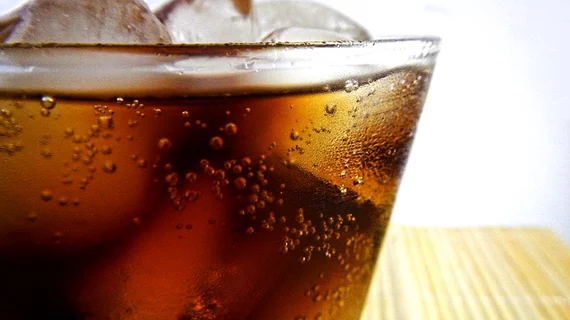AHA, AAP recommend policies to limit kids’ sugary drink consumption
The American Heart Association (AHA) and the American Academy of Pediatrics (AAP) issued a joint policy statement March 25 recommending a series of public health measures aimed at reducing children’s consumption of sugary beverages.
In a press release, lead author Natalie D. Muth, MD, MPH, RDN, pointed out that most of the added sugars consumed by kids comes from what they drink, not what they eat. Evidence suggests teenagers who get more than 10 percent of their daily calories from added sugars are more likely to have higher LDL cholesterol, higher triglycerides and lower levels of the protective HDL cholesterol.
“On average, children are consuming over 30 gallons of sugary drinks every year,” Muth said in the release. “This is enough to fill a bathtub, and it doesn’t even include added sugars from food. As a pediatrician, I am concerned that these sweetened drinks pose real—and preventable—risks to our children’s health, including tooth decay, diabetes, obesity and heart disease. We need broad public policy solutions to reduce children’s access to cheap sugary drinks.”
Specifically, the joint statement—which was published online in the journal Pediatrics—includes the following recommendations.
1. Policymakers should raise the prices of sugary drinks, perhaps through an excise tax.
In addition, these taxes should be accompanied by an educational campaign, and the revenue the taxes generate should be at least partially allocated to reducing health and socioeconomic disparities, the authors wrote.
The statement highlighted nationwide taxes on sugary drinks in Chile and Mexico, where a 10 percent excise tax implemented in 2014 was linked to a 7.6 percent reduction in sugary beverage consumption over the next two years. The tax is expected to prevent nearly 200,000 cases of obesity and save $980 million in direct healthcare costs between 2013 and 2022.
Some U.S. cities have also implemented their own taxes and used the revenue for community programs. San Francisco used its 1 cent-per-ounce tax to fund grants for preventive health services in low-income communities, as well as school nutrition programs. Seattle’s 1.75 cent-per-ounce tax has gone toward similar nutritional efforts.
2. Federal and state governments should support efforts to decrease sugary drink marketing to children.
Beverage companies spent $866 million in marketing in 2013, and most teens see at least one advertisement each day for a sugary drink, according to the release. Low-income and minority children are disproportionately harmed by easy access to these products, and their low cost.
3. Healthy drinks like water and milk should be the default options on kids’ menus, and federal nutrition assistance programs should promote access to healthy food and beverages while discouraging sugary drinks.
Last August, California became the first state to pass a law making water or milk the default option for kids’ meals. Sugary beverages were still available, but only upon request. Five other states are considering similar bills and several cities have passed similar ordinances, the report noted.
For the federal nutrition programs such as the Supplemental Nutrition Assistance Program, it’s crucial to both improve access to healthful foods and remove SNAP benefits for sugary drinks, the authors said. That means the per-meal allocation to program participants shouldn’t be trimmed just because some products are being eliminated.
In addition to these measures, the AHA and AAP said credible nutrition information must be made readily available on nutrition labels, restaurant menus and advertisements, and the organizations suggested hospitals and physicians take the lead on disincentivizing sugary drink purchases.
“Although the strength and availability of evidence supporting the policy recommendations addressed in this report vary and although there may be significant barriers or considerations in implementation of some or all of these recommendations, pediatricians may tailor their advocacy efforts to approaches that are most likely to lead to decreased access to and consumption of sugary drinks in the children and families they serve, whether on a local, state, or federal level,” Muth and co-authors wrote.

